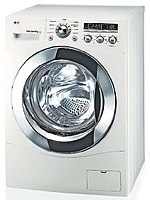
Photo from wikipedia
Aim The present in vitro study evaluated the accuracy of intraoral scanners (IOS) in a completely edentulous arches and analyzed the influence of operator experience on accuracy, also time efficiency… Click to show full abstract
Aim The present in vitro study evaluated the accuracy of intraoral scanners (IOS) in a completely edentulous arches and analyzed the influence of operator experience on accuracy, also time efficiency and operator’s difficulty perception related to IOS procedures. Materials and methods Twenty participants were enrolled for the digital scanning procedure of a maxillary edentulous metal model using an intraoral scanner, Aadva iOS100 (GC Corp., Tokyo, Japan). Participants were divided in two groups according to their experience in intraoral scanning procedures: Inexpert (InE group) without any experience in dental scanning (n=10) and Experts (E group) composed of operators with at least 3 year of scanning experience with IOS (n=5). Five IOS procedures were repeated for each operator and exported as a correspondent Stereolithography (STL) file. The same model was scanned with a laboratory scanner (LSS) (D1000 3 Shape Copenaghen Denmark), obtaining an STL file of the model which has been used as a reference. Accuracy of IOS were evaluated using a surface adaptation software (Geomagic Design X). The time required for each scanning procedure, and the perceived difficulty level were recorded for all the participants. The data obtained about accuracy, scanning time and difficulty perceived were compared between the two groups using the T-test for independent samples. The same variables were also correlated with each other using the Pearson’s coefficient. Results The highest trueness was observed for the scans provided by E participants. Precision ranged from 95,89 to 79,36 respectively in E and InE operators. For both trueness and precision there were significant differences between the two groups (p<0.05). Regarding scanning time, the more experienced operators were faster than inexpert ones with a significant difference (p<0.001). The two groups reported also differences in terms of difficulty perceived. Pearson’s correlation reported for time scanning a significant correlation with trueness p<0.001 and precision p<0.05 and between difficulty perceived and trueness p<0.05. Conclusions Digital impressions accuracy was different in E and InE operators as well as the scanning times, that was correlated with both trueness and precision.
Journal Title: Journal of Osseointegration
Year Published: 2021
Link to full text (if available)
Share on Social Media: Sign Up to like & get
recommendations!